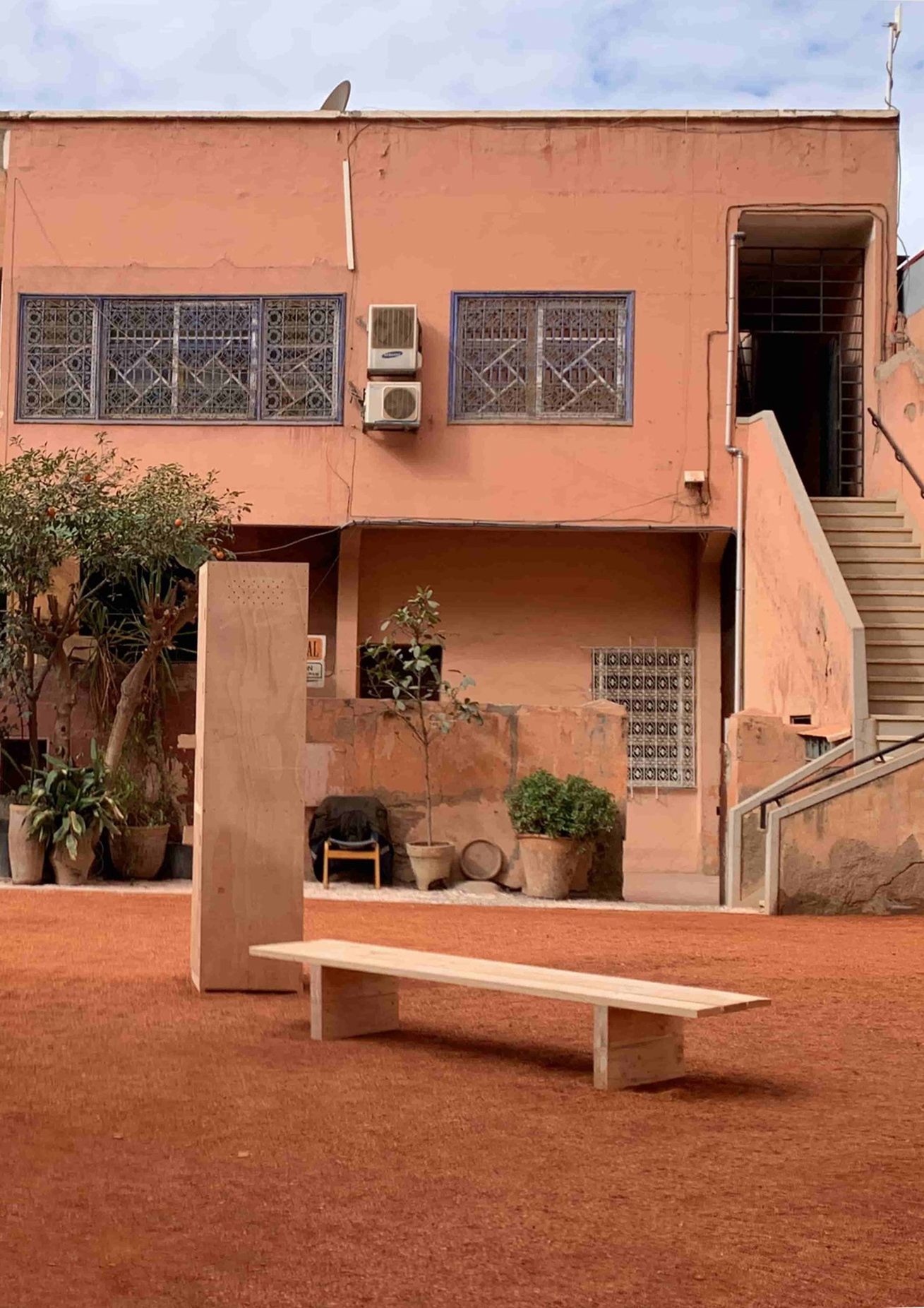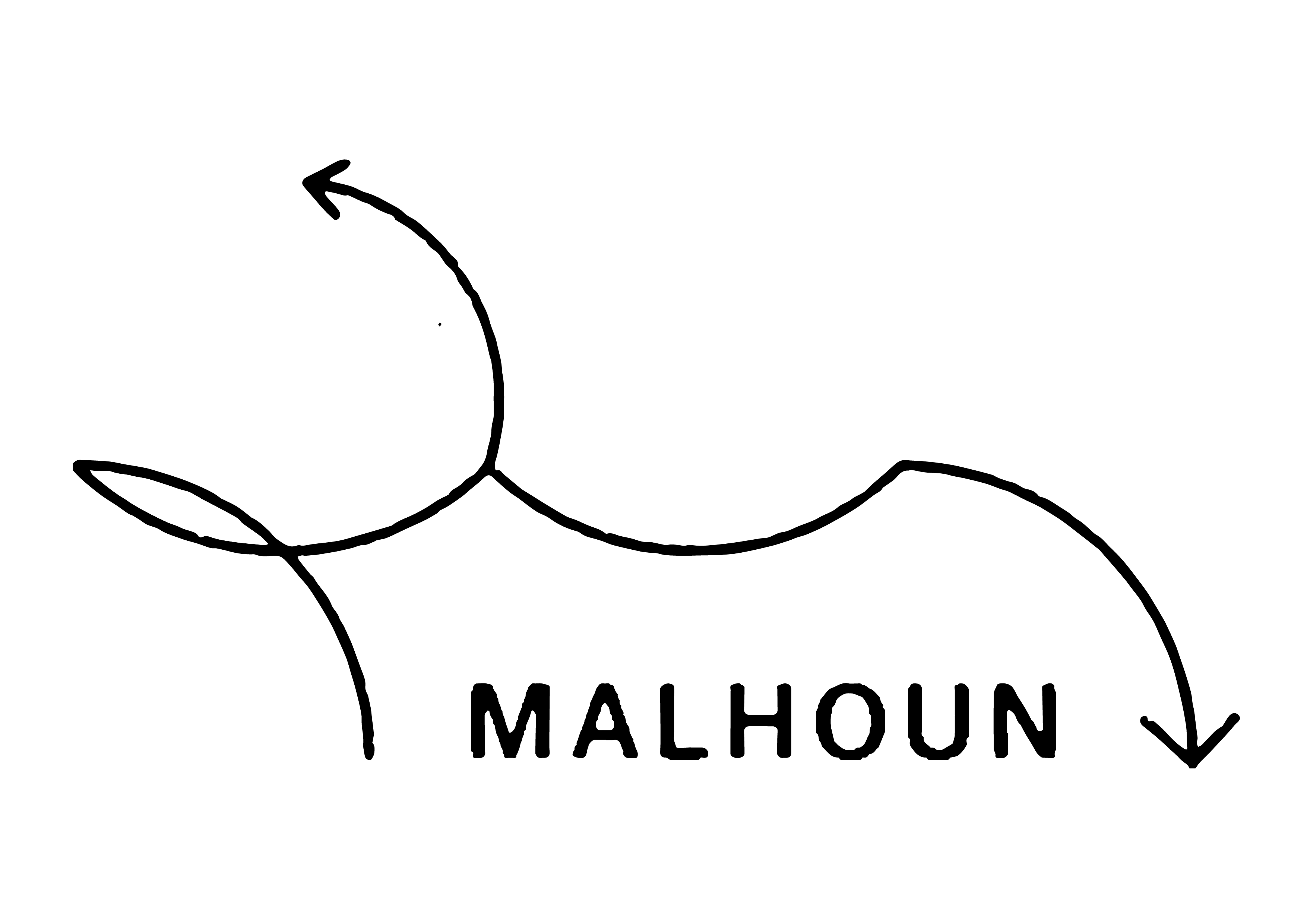 Photo: Carlos Perez Marin
Photo: Carlos Perez Marin
Malhoun is a ever evolving Social-Institutional Artwork by Eric Van Hove. It was
initiated by the artist’s studio (Fenduq.com) in late 2019 with the Malhoun 2.0 exhibition. Resuming after the Covid Pandemic, from 2021 to 2025 Malhoun then evolved into an artist-run gallery space offering 5 studios for young artists and
an outdoor cinema. It was hosted in a 1950’s building at
175
Rue Mohammed el Beqal in Gheliz, Marrakech
(picture on the left)
.
Malhoun’s Gheliz location closed end of 2025 following on the scheduled destruction of the building that used to host it.
The Malhoun Office
Locally speaking, Malhoun was an artist hang-out functioning like a buffer, between the artists and the gallerists, between the art fair & the souk, between the diaspora and the locals, between creative fields somehow brought to cohabit in the building & themselves. Overall, as a platform centered on knowledge and know-how exchange, during its 5 years of existence Malhoun aimed to serve as a catalyst for the meaningful growth of local cultural ecosystems.
Typically, it fostered a yearlong exhibition where affiliates showcased their productions and thoughts by way of a continuum: overlapping organically, items and propositions came and went following the conversations and intuitions of participants, as well as their practical needs. Exhibitions were usually tailed by ‘witnesses’ invited to follow the production process. Broadly speaking, exhibitions used to be conjointly conceived with witnesses, and commercial in nature, though it could vary. Instead of openings, gatherings and ‘selat al rahim’ were organized from time to time, conveying the public to foster the bonds of kinship within the building.
Malhoun’s Gheliz location closed end of 2025 following on the scheduled destruction of the building that used to host it.
The Malhoun Office
︎
Locally speaking, Malhoun was an artist hang-out functioning like a buffer, between the artists and the gallerists, between the art fair & the souk, between the diaspora and the locals, between creative fields somehow brought to cohabit in the building & themselves. Overall, as a platform centered on knowledge and know-how exchange, during its 5 years of existence Malhoun aimed to serve as a catalyst for the meaningful growth of local cultural ecosystems.
Typically, it fostered a yearlong exhibition where affiliates showcased their productions and thoughts by way of a continuum: overlapping organically, items and propositions came and went following the conversations and intuitions of participants, as well as their practical needs. Exhibitions were usually tailed by ‘witnesses’ invited to follow the production process. Broadly speaking, exhibitions used to be conjointly conceived with witnesses, and commercial in nature, though it could vary. Instead of openings, gatherings and ‘selat al rahim’ were organized from time to time, conveying the public to foster the bonds of kinship within the building.
